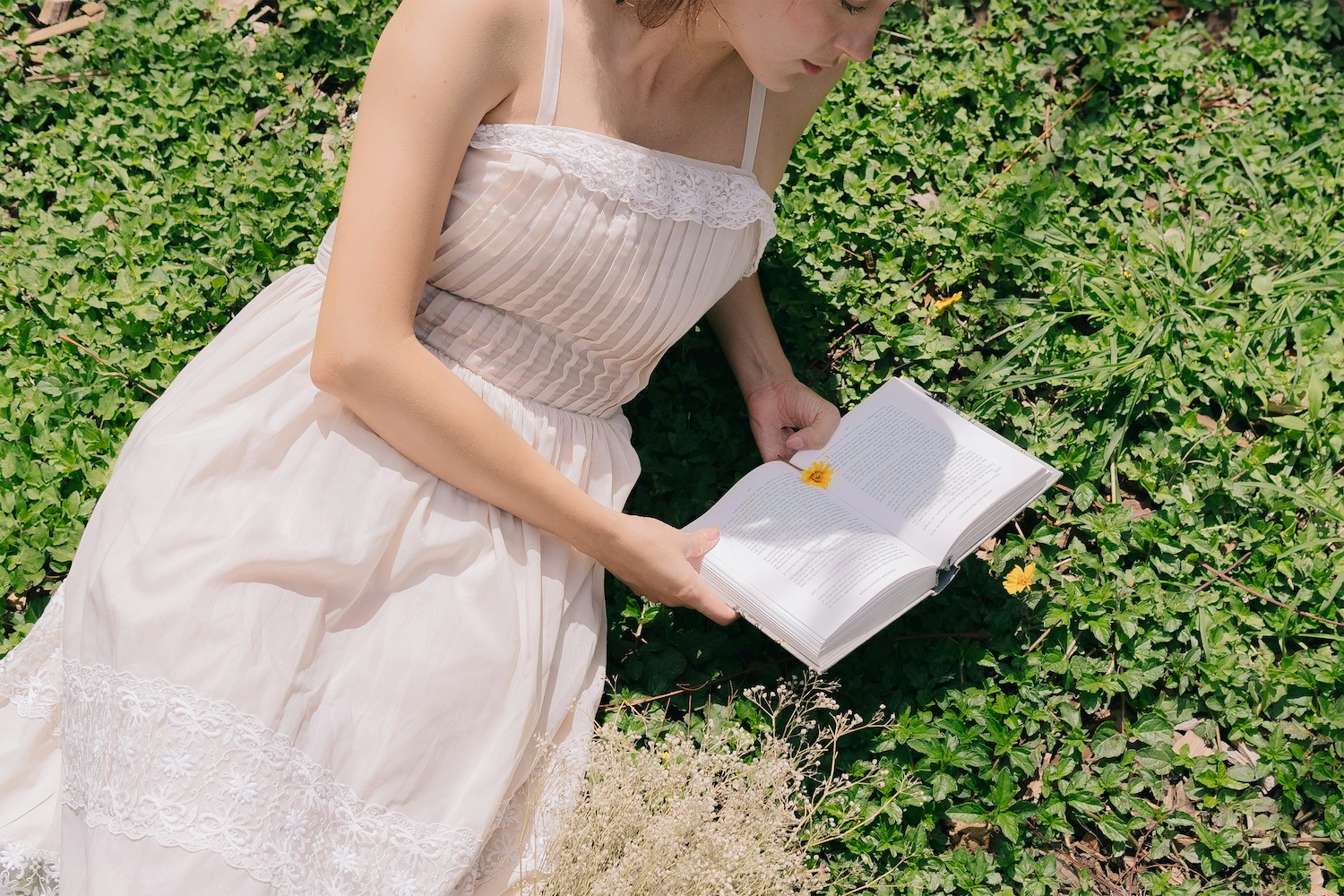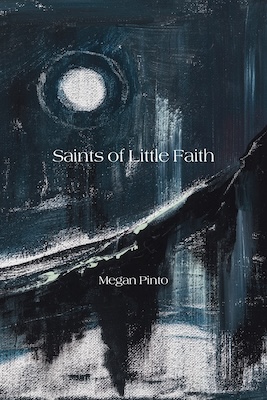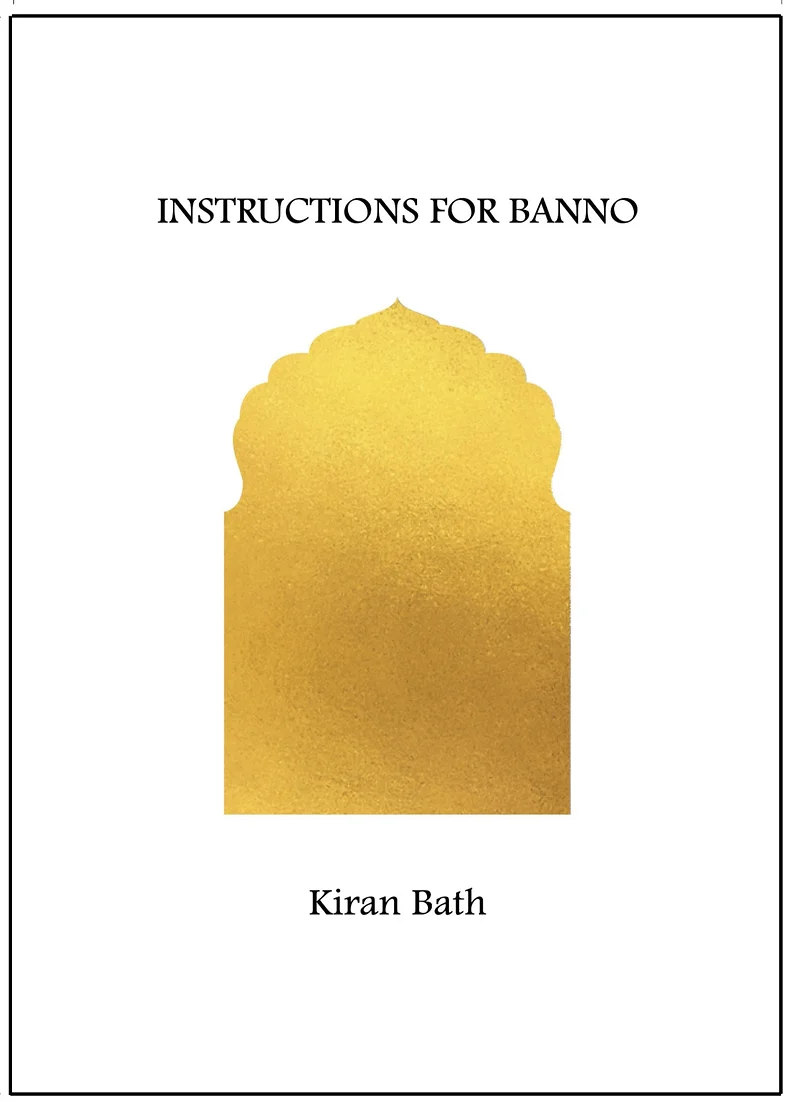As a poet, I think about how a poem’s formal elements impact its content. To put it another way: form is the container into which we pour our material, and like water, the poem takes on the form’s shape. A coming-of-age novel, film or TV show is often regaled in prose, with a linear structure; but a coming-of-age poetry collection often moves back and forth between the speaker’s past and present selves, allowing these selves to meet on the page, in a way that is not possible in life. Additionally, a poetry collection can draw upon a fixed form (ex. a sonnet), or create its own constraints.
My debut poetry collection, Saints of Little Faith, seeks to explore the relationship between my childhood and adulthood selves. When I first started writing my book, I thought I would get to the root of my sorrow by exploring my lapsed relationship with God. But the poems quickly revealed that they were also interested in exploring my relationship with my father, along with family lore and high school. When I started to really work with my material, I wondered, should I just start at the beginning of my life and write to the end? But that approach lacked tension and did not capture the way my mind moved through memory and feeling.
As I revised individual poems and ordered the collection, I looked to others for example and inspiration. Here are seven coming-of-age poetry collections that play with form, illuminating new possibilities of engaging our past and present selves.
The Twenty-Ninth Year by Hala Alyan
Hala Alyan’s The Twenty-Ninth Year subverts linear structure, often moving associatively between places (across the Middle East and America) and states of being (alcoholism to recovery; singlehood to marriage). In “Truth,” the collection’s first poem, Alyan writes:
“Hunger is hunger. I got drunk one night
and argued with the Pacific. I was twenty. I broke
into the bodies of men like a cartoon burglar. I wasn’t twenty.”
These contradictory statements create tension. What is the true age of the speaker? And ultimately, does this narrative fact matter, if what the poem is ultimately asking us to do is feel? Some of the poems in the collection take on longer, prosaic lines, but are paired with short section breaks that move us surprisingly from one moment into the next. In “Telling the Story Right,” Alyan’s speaker lists a series of texts she has received:
“Goddamnit Hala why don’t
The airport
They took
The men
The men
The men”
And then moves to prosaic lines:
“Two years later, I fill a flask with warm rum. Men line the neighborhood with rifles. A boy swarms my body. It’s not your war, you know. I want to spit in his mouth.”
How do we reclaim authority over our own story’s telling? One mode that Alyan suggests is through bringing in different states of being, both the high lyric which suspends us in deep anxiety (“Baba they took the men/ Baba they took your hair”) and the narrative, which moves us through time:
“I shook the chain-link fence near the border and gave a false name. Lorelei. I kissed the night guard, stalling. His eyes silver as a wedding ring; he showed me the dangerous thing in his hands. You better use those legs, Lorelei. I did.”
I’ll also call out Alyan’s gorgeous step work poems, which do not progress linearly, but instead leap to whatever step is most in conversation with the material that surrounds it ( For example, “Step Eight: Make Amends” a poem about changing one’s behavior, is preceded by “Even When I Listen, I’m Lying,” and followed by “A Love Letter to My Panic // A Love Letter to My Husband”.) Reading Alyan’s collection encourages me to let go of linearity, and instead prioritize felt experience, both as a writer and for the reader.
Ghost::Seeds by Sebastian Merrill
As we cross the threshold into a new phase of our lives, how do we speak to our past selves? “If our mother were to tell our story,” the speaker offers, “it would begin with grief./ She mourned your loss,/ her only daughter.” Ghost::Seeds is a book length dialogue between a trans-masculine speaker and his former self, now a girl-ghost. To create texture and variation across manuscript, Merrill weaves in a second sequence, a queer spin on the myth of Persephone, a coming-of-age myth itself, about the separation of daughter from mother, the movement into the winter of one’s life, that leads to adulthood. Or, as Merrill’s speaker aptly puts it in the first “Ghost:: Persephone” poem:
“It takes a long time
for the eyes to adjust
to the enfolding dark.”
Notice, too, how the “Ghost::Persephone” poems are all right margin aligned. Here’s another excerpt from later in the collection:
“I gathered flowers.
Hades poisoned me,
dragged me, t-shirt torn,into the underland.
Poppies wilter
in my trembling hands.”
The effect of shifting away from the right margin, is that we feel the absence of the familiar, left margin. We become more attuned to the white space on the page, not taken for granted. Merrill’s speaker asks us to look and look again. In reckoning with the self, we must confront our wounds. Merrill teaches us tenderness, through the use of the second person:
“You do not have to abandon
your sweet self
to love what is lost.
I’ll never be sorry.”
Through language, the self can hold the former self close.
Organs of Little Importance by Adrienne Chung
As poets, we have the gift of fixed forms. In Organs of Little Importance, Adrienne Chung shows how adept she is at imagining widely with a form’s constraints. In the book’s opening ghazal, “Tasman,” the speaker shares about an encounter with a lover:
“When Tasman went home, I pleaded with heaven.
Night hung low in the branches, twilight muslin.Why is there always that scene in the movies—
white sheets on clotheslines, rippling like muslin?My mother prayed for a girl in pink satin.
God punished her with a small fright in muslin.”
Within these three stanzas, we move between varied images—branches at night, white sheets on a clothesline, the speaker’s mother praying for a girl in pink satin; and of course, that devastating turn from satin to: “God punished her with a small fright in muslin.” (Note, too, the movement between adulthood and childhood, the ache that links them.) The ghazal is anchored by its refrain, in this poem “muslin.” When the reader’s ear is primed with repetition, any sonic change is heightened. In studying Chung’s fixed forms (shout out to the sonnet crown at the book’s end), I am once again awed at how compression allows for a density of expression, a multiplicity of self. But I am equally impressed with her ability to write prosaic lines within nonce forms, such as the numbered sequence, “Blindness Pattern.”
“>>
1 . There is a mathematical formula { R = e – t/s } which plots the erosion of memory over time where Retrievability is Euler’s number to the negative power of Time over the Stability of memory. They call this the Forgetting Curve.
2 . What this means is that memory fades.”
Notice the sharp change in diction, from a scientific language to a declarative sentence. By allowing herself to think in different formal shapes, Chung’s collection continues to surprise the reader with self-revelation.
Instructions for Banno by Kiran Bath
When we come of age, we move back and forth between states of confusion and clarity. At times, we must look outside ourselves to understand our emotional inheritance, to perhaps better discern who and why we are. In Instructions for Banno. Bath brings together the voices, experiences, and geographies of women in her family, making a compendium of advice for the Banno, a South Asian bride. Bath writes prose poems in a high lyric, with short, declarative sentences:
“Say time is non-linear. Say here we collapse planes, enter at even age. Choose 23 (ornaments, early confidence). In this version you’re not married off. . .”
—from “How to return” (DEEPU TO NIKKI)
Amidst the moment across generations and continents, the poet interrupts.
“Have you pondered on the sex lives of our elders?
I read the Kama sutra and realized Vātsyāyana was a hypocrite.
I read the Sattasaī and felt shapes of longing and restoration.
I started living alone to develop a formula.
A connection of stars between G-spot and clit-song.”
—From “
Instructions for BannoThe poet interrupts: How to fuck anew”
Formally, this new speaker, the poet, breaks out of the established prose block and into monostitches; from short, declarative sentences into compound sentences. We move from the intense language of the interior, a language spoken between mothers and daughters, sisters and brides, to a question, and answers that link clause with clause, thought with realization. In this way, the book’s language enacts movements from feeling into thinking; from receiving knowledge to processing knowledge, and moving through it.
回 / Return by Emily Lee Luan
Poetry is a lyric art, often concerned with communicating a depth of feeling. And what feeling is more true to the experience of adolescence as sadness? In 回 / Return, Emily Lee Luan writes of the Taiwanese diasporic experience, the sorrow of displacement, the search for belonging and the many ways we return–through memory, art, and imagination. In “Anger Diaries,” the speaker writes of her mother:
“I watched/ from behind the turning conveyor belt,
her broken English. But is there a word
for an anger rooted in sadness? Is there forgiveness
for us in either of our languages?”
Luan engages this question through diction (many of the poems contain the words “sorrow” or “sadness”), as well as through form, by translating the Chinese tradition of the reversible poem into English. Here are the first two lines of “Reversible Poem in Dishwater”:
“He carried me into the kitchen to get a glass of water
He reached for a cup in the sink filled with dishwater,”
and the final two lines:
“The cup sinking he reached for me
The kitchen carried me into the glass”.
Note, first, the melancholy of those images, the glass of water/ dishwater, the cup sinking, the kitchen (in the absence of the lover) carrying the speaker into the glass. Second, how traditional grammar has been subverted: the noun “sink” returns as the verb “sinking,” the direct object “cup” returns as the subject “the cup sinking”. The reversible poem can also be read in multiple directions, so another reading of the poem could begin with: “The kitchen carried me into the glass/ The cup sinking he reached for me,” which is a literal image of sorrow: the speaker in a glass, sinking. . .
Portrait of Us Burning by Sebastián H. Páramo
How do we make meaning of what pains us? In Sebastian Páramo’s Portrait of Us Burning, the speaker uses the framing of self-portraiture to imagine himself into the holes, gaps, and fragments of memory. From “Self-Portrait as My Father”, the speaker states:
“I work hard heat into a home.
Then when everything is done & dark,I lie flat & can’t help thinking of those/ who named stars. Because there once was a
city I fled.”
The speaker speaks as his father, or perhaps through him, recounting moments that the speaker knows of his father’s life. Thinking of his first love, a blue-green Chevrolet truck, the speaker as his father declares:
“I will gift it to my son for nothing.
He earned it when he gave me a North Star.I will lead him by his hand to the flatbed
& we’ll look toward a swath of stars. We’ll call
it ours.”
Portraiture and self-portraiture provide another vantage point from which to access our own experience, and imbue it with resonance: we imagine, so carefully, into what we cannot fully access. Playing with negation in “Portrait of What He Didn’t Want” the speaker describes his father as:
“such a neat man. . . He didn’t want to pick up the pieces. He didn’t want love to become backbreaking work. He didn’t want that choice. One day, he found himself with a hammer. He didn’t want to clean houses. He filled himself with things. All the things he never had.”
Afterlife by Michael Dhyne
In novels, a coming-of-age story (often) has an inciting incident. What do we claim as our origin story, the birth of our spiritual and artistic concerns? Michael Dhyne’s Afterlife opens with “To My Father, The Light”:
“In the room, there are two reels projecting onto the wall. One is playing
your death and the othermy birth. One starts in a bathtub, the other staring up at the sky. Both
in a pool of light—”
Dhyne writes, with precision and clarity, about his father’s sudden death, and how he had to learn to keep living. Later in the poem, Dhyne writers:
“The reels catch fire. I try to save myself,
leaning against the wall as your image dissolves beside me. I can’t see you,
only the light you passed through to get here.”
The image of light, so beautifully established in this opening poem, recurs throughout the book, suspending us, the readers, in the speaker’s present moment. In “New Mexico” the speaker is awestruck on a road trip:
“I wake Jesús in the passenger’s seat because I’ve never seen light that looks like this–like a radiant bruise. Lightening cuts into the sky then disappears. I wonder if we should be afraid.”
How do we allow in that which is bigger than us–love, grief, death–these forces that shape our lives, that we try to get close to, in an attempt to understand? Dhyne’s speaker implores us:
“Reader, if you believe one thing I tell you,
let it be this. As Jesús sketched my portrait
in the dim light of a rented basement room,
I sat on the floor and wrote, I’m sorryI couldn’t be there for you. And yes, I was high
and in love and crying, but I really did feelmy father’s spirit move through my body,
that he wrote those words, not me.”
“Truth” and “Telling the Story Right” from The Twenty-Ninth Year by Hala Alyan. 2019 © by Hala Alyan. Courtesy of HarperCollins Publishers.
Excerpt from Ghost :: Seeds © 2023 by Sebastian Merrill. Appears with permission of Texas Review Press. All rights reserved.
Excerpt from Organs of Little Importance by Adrienne Chung © 2023. Appears with permission of Penguin Books, an imprint of Penguin Random House. All rights reserved.
Excerpt from Instructions for Banno © 2024 by Kiran Bath. Appears with permission of Kelsey Street Press. All rights reserved.
Excerpt from 回 / Return © 2023 by Emily Lee Luan. Appears with permission of Nightboat Books. All rights reserved.
Excerpt from Portrait of Us Burning: Poems © 2023 by Sebastián H. Páramo. Appears with permission of Curbstone Press, an imprint of Northwestern University Press. All rights reserved.
Excerpt from Afterlife © 2023 by Michael Dhyne. Appears with permission of The University of Wisconsin Press. All rights reserved.
Read the original article here


